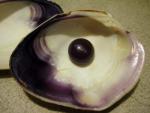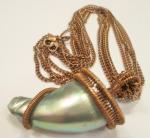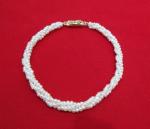Pearl Farming in Phuket, Thailand
by NIVEDANA JALAN
BY NIVEDANA JALAN
It’s a warm tropical morning in southern Thailand. The sun is peeking into my dimly lit room. Under normal circumstances, I would already be at the beach. But today, I am at a pearl workshop in Phuket, where I am about to learn five decades’ worth of secrets about pearl culture.
My latest acquaintance, Mr Ung, is a pearl specialist and farmer who has been in the business since the 1970s. He runs a small-scale setup called Ung Pearl in Wichit, a modest town at the southern end of Phuket, and after much cajoling, he has agreed to give me an exclusive tour of his workshop, farm and pearl store.
From the corner of my eye, I see a flurry of activity at a tiny workstation in the centre of the room; sharp metal instruments have been washed and arranged. A piercing beam of light comes on as a giant oyster is cautiously laid out on a white tablecloth. I may as well be inside a surgical room.
I take a few steps for a closer look as Mr Ung uses a pair of clamps to pry open the stiff oyster shell to begin the seeding or grafting process. He inserts a small, rounded pearl seed, made from the mother-of-pearl lining of a previously used or ready-to-discard oyster, into the slimy and slippery gonad aka ‘pearl pouch’. Over the next few minutes, this ‘surgery’ is repeated with over a dozen oysters, and before I know it, they have all been seeded.
Ignorant (or innocent) as it may seem, I always believed that all real pearls were found in the wild, either by professionals diving for them, or by sheer accident. While this was indeed true until the early 20th century, the introduction of pearl culture in the 1920s changed the industry dramatically.
SOURCE: https://www.cntraveller.in/story/picking-the-perfect-pearl-in-phuket/
Join in and write your own page! It's easy to do. How? Simply click here to return to Pearl Farms.



